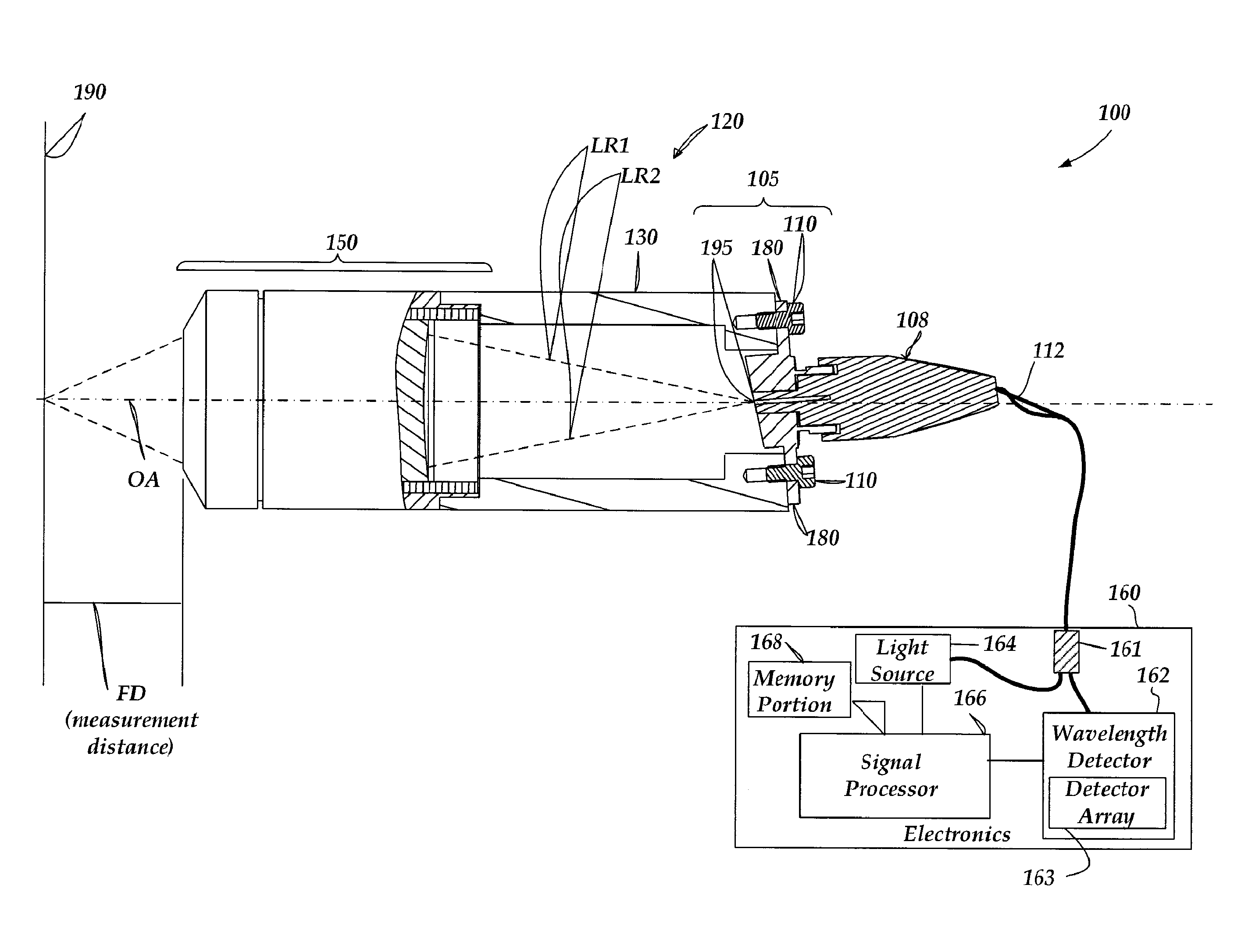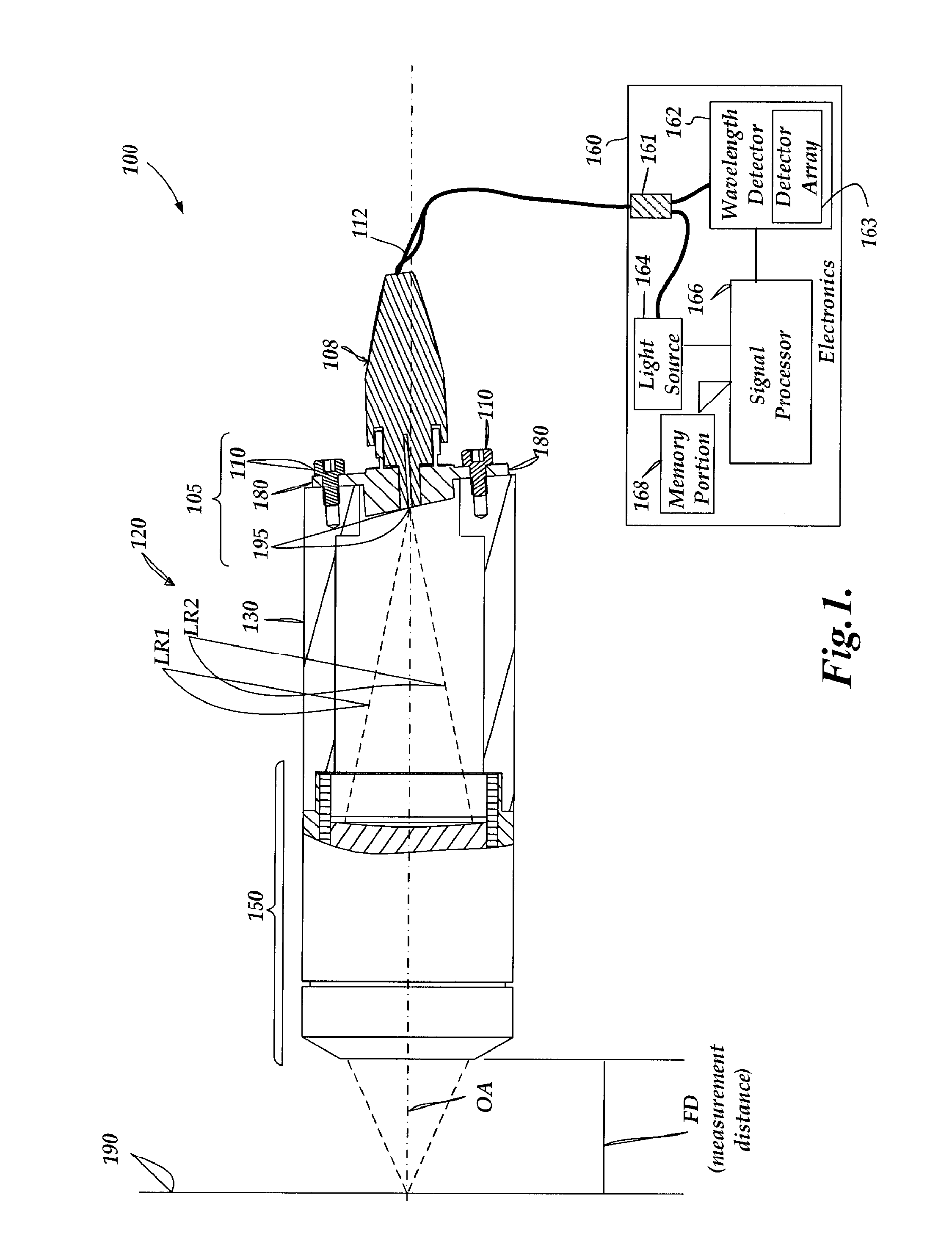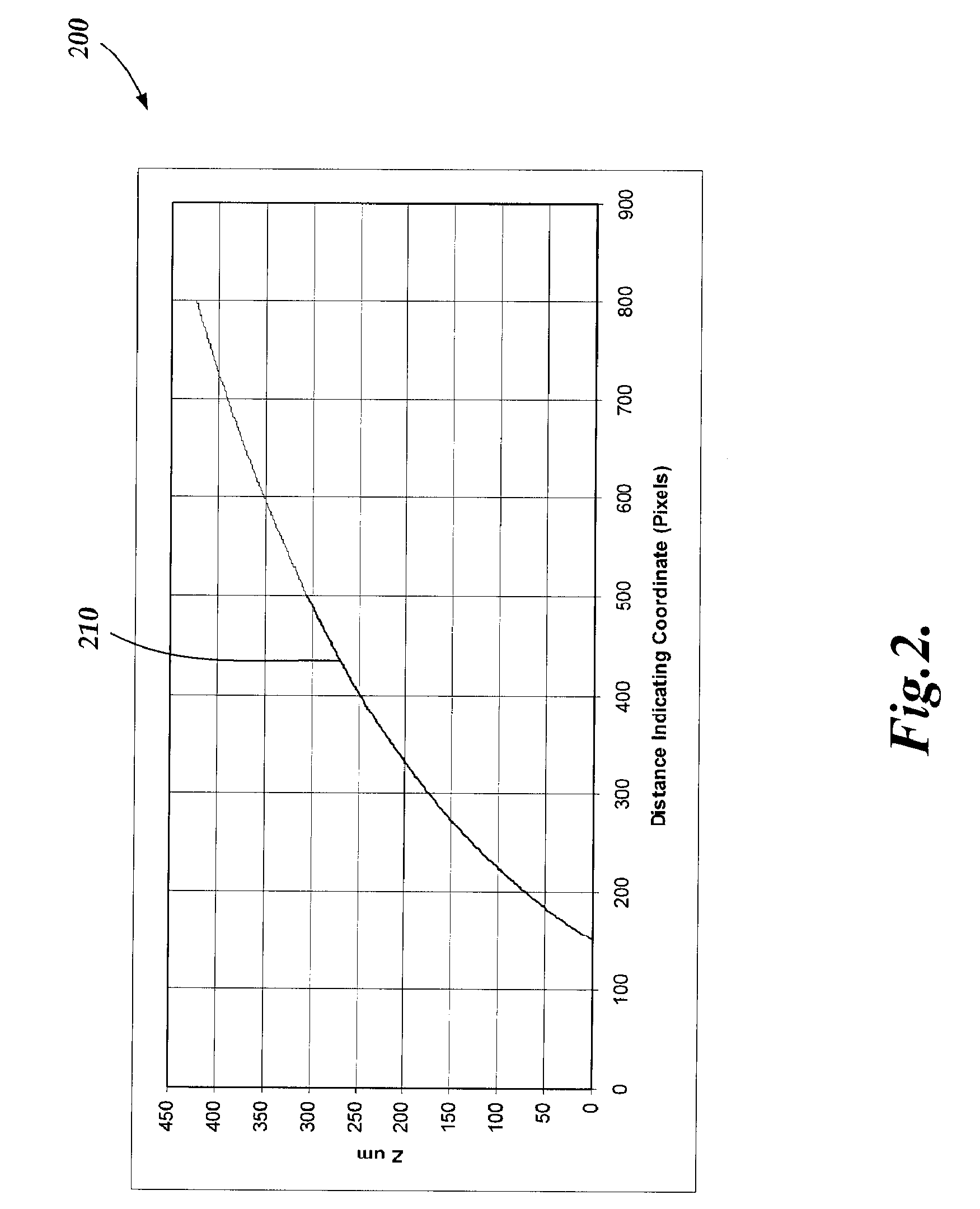Dynamic compensation of chromatic point sensor intensity profile data selection
a chromatic point sensor and intensity profile technology, applied in the field of precision measurement instruments, can solve problems such as undesirable measurement variations in known implementations
- Summary
- Abstract
- Description
- Claims
- Application Information
AI Technical Summary
Benefits of technology
Problems solved by technology
Method used
Image
Examples
Embodiment Construction
[0036]FIG. 1 is a block diagram of an exemplary chromatic point sensor 100. As shown in FIG. 1, the chromatic point sensor 100 includes an optical pen 120 and an electronics portion 160. The optical pen 120 includes an in / out fiber optic sub-assembly 105, a housing 130, and an optics portion 150. The in / out fiber optic sub-assembly 105 includes a mounting element 180, that may be attached to the end of the housing 130 using mounting screws 110. The in / out fiber optic sub-assembly 105 receives an in / out optical fiber (not shown) through a fiber optic cable 112 which encases it, and through a fiber optic connector 108. The in / out optical fiber outputs an output beam through an aperture 195, and receives reflected measurement signal light through the aperture 195.
[0037]In operation, light emitted from the fiber end through the aperture 195 is focused by the optics portion 150, which includes a lens that provides an axial chromatic dispersion such that the focal point along the optical ...
PUM
 Login to View More
Login to View More Abstract
Description
Claims
Application Information
 Login to View More
Login to View More - R&D
- Intellectual Property
- Life Sciences
- Materials
- Tech Scout
- Unparalleled Data Quality
- Higher Quality Content
- 60% Fewer Hallucinations
Browse by: Latest US Patents, China's latest patents, Technical Efficacy Thesaurus, Application Domain, Technology Topic, Popular Technical Reports.
© 2025 PatSnap. All rights reserved.Legal|Privacy policy|Modern Slavery Act Transparency Statement|Sitemap|About US| Contact US: help@patsnap.com



